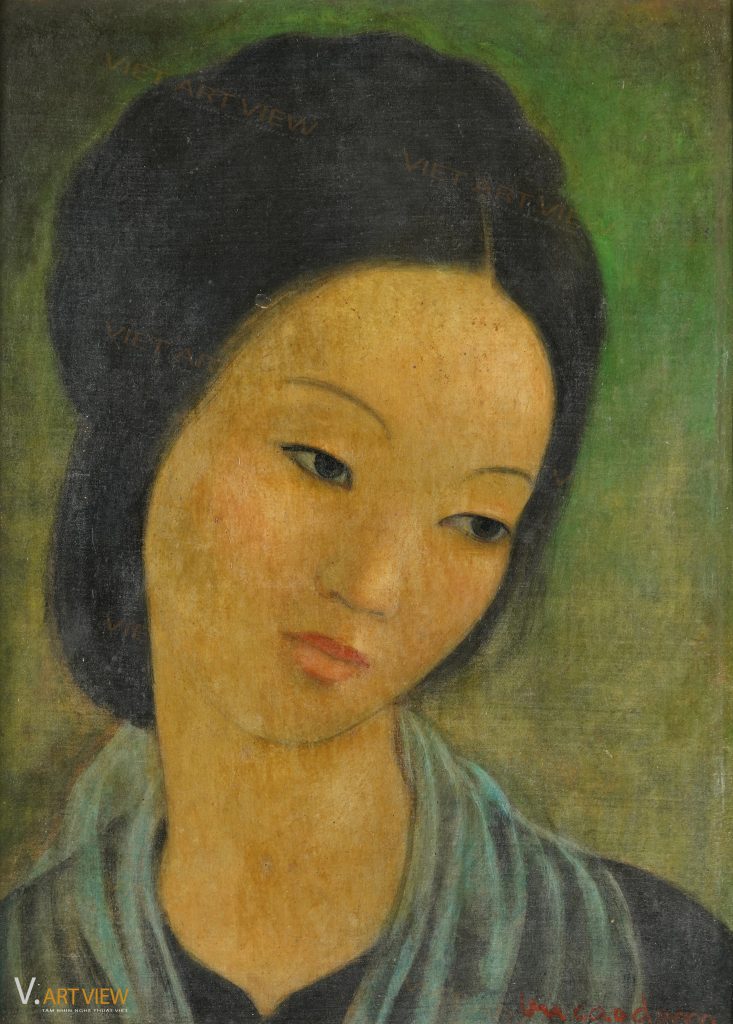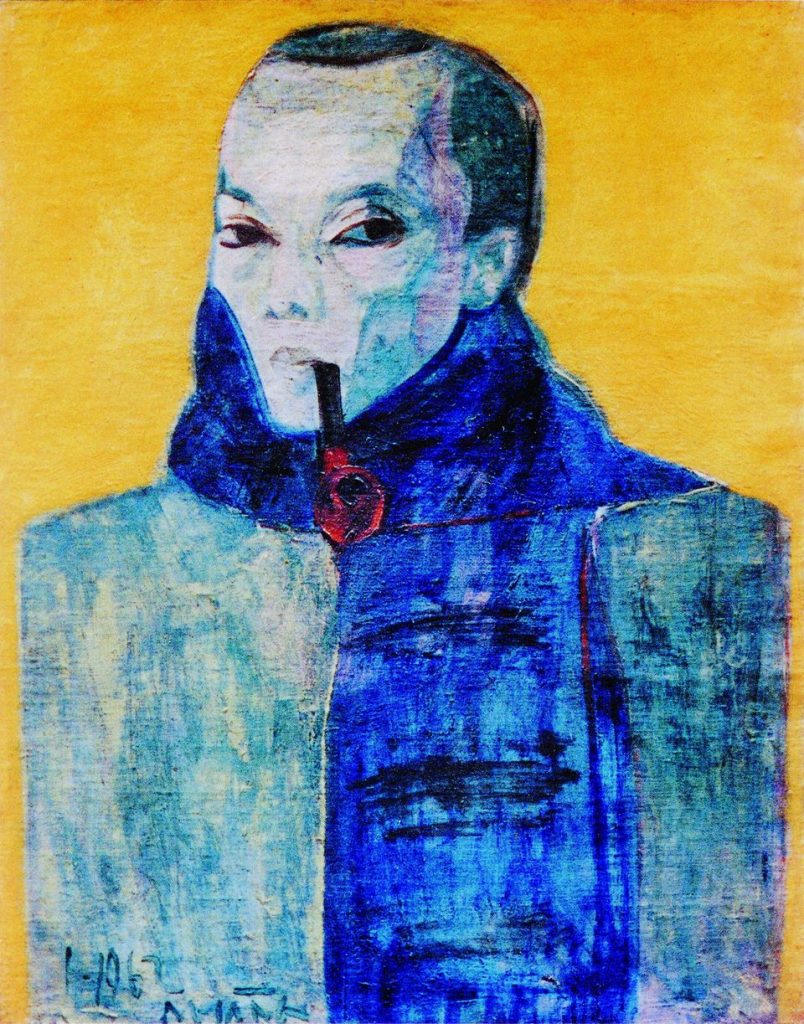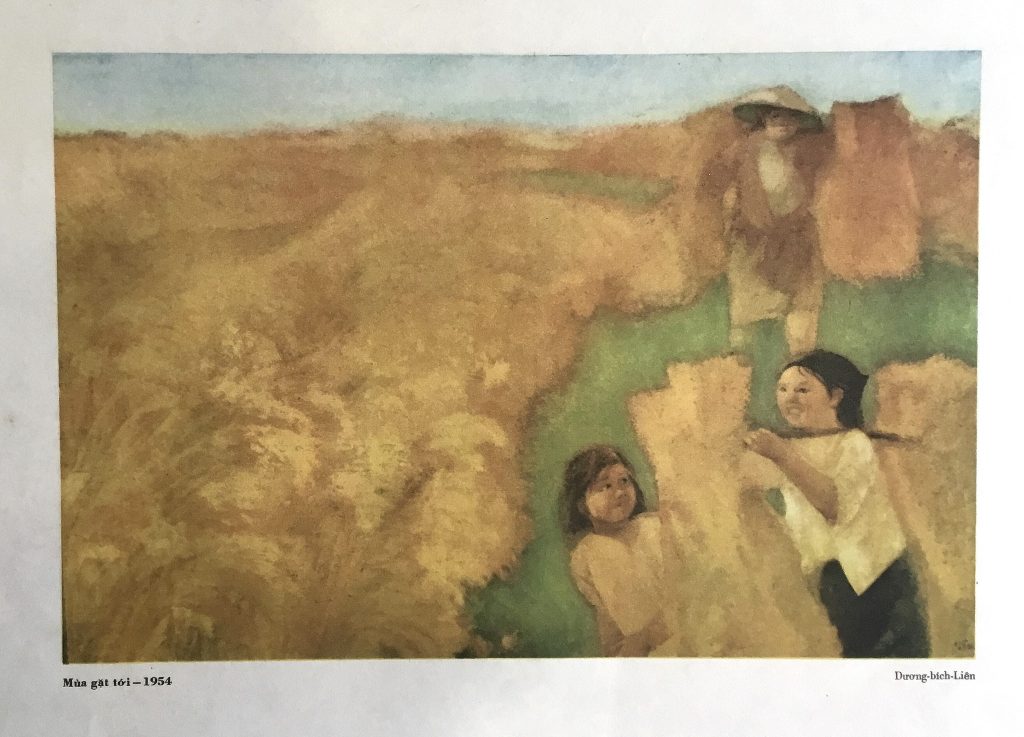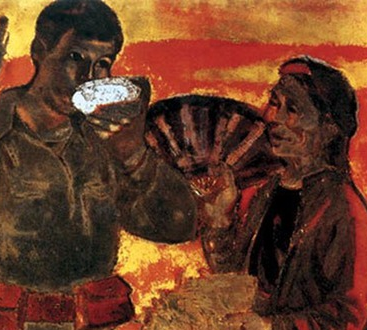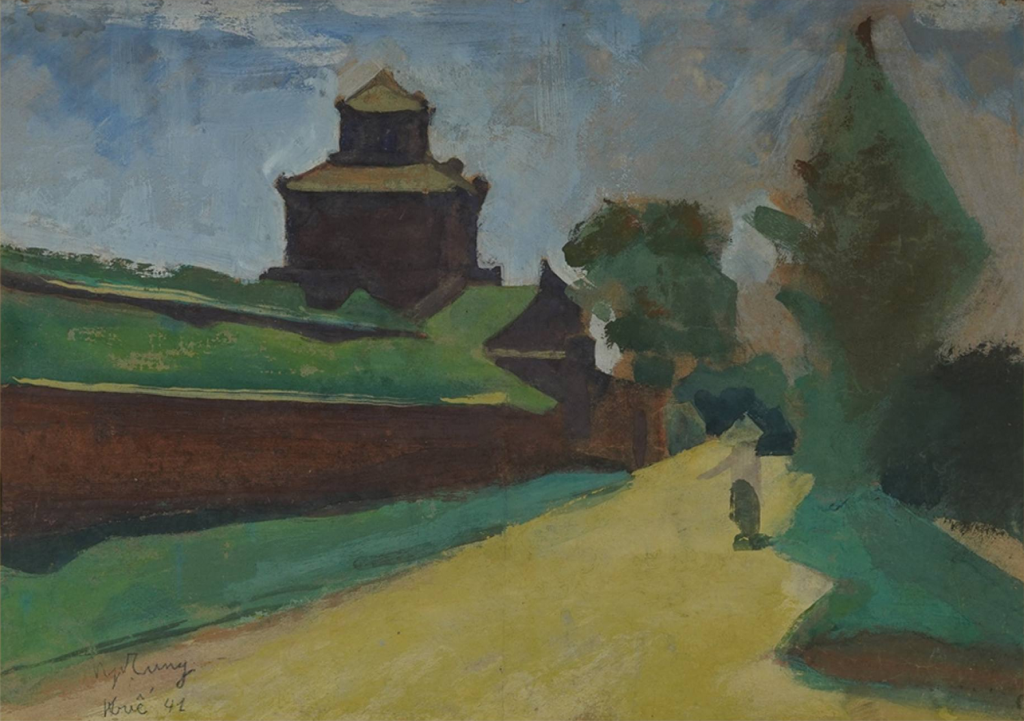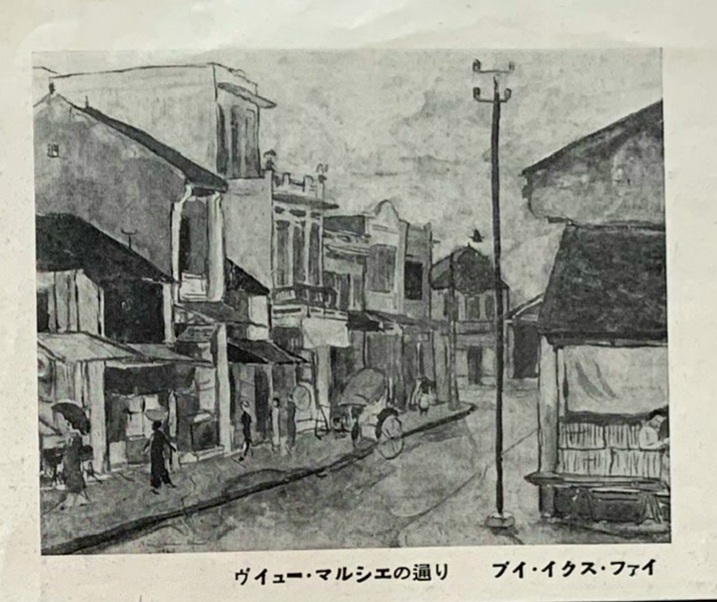- In the article ‘Portrait of my mother by Nguyễn Nam Sơn – a national treasure’ written about a work of artist Nam Sơn, oil painting ‘Portrait of my mother’; Researcher Ngô Kim Khôi, grandson of painter Nam Sơn (1890-1973) mentioned the issue of ‘National treasure’. So, let’s try to find out a few issues around so we have a better picture.
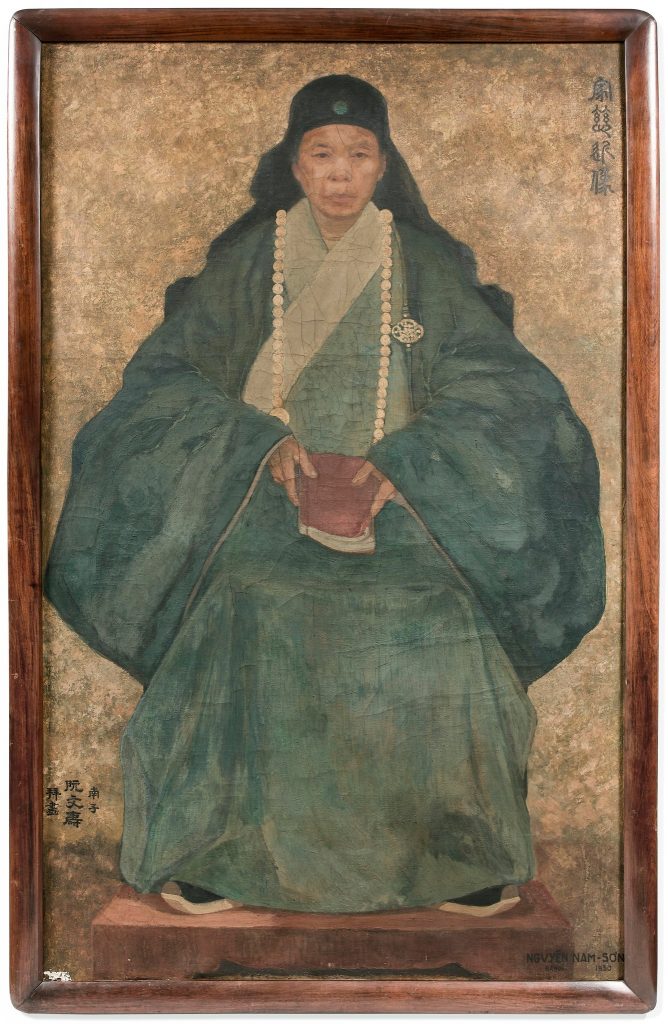
Nguyễn Nam Sơn (1890-1973). Portrait of my mother. 1930. Oil. 170×103.5 cm. The starting price 200-300k EUR.
2. Thus, in Vietnam, what is a national treasure? National treasures are artifacts of special cultural and historical value, protected and preserved by the State of Vietnam.
According to Mr. Vi Kiến Thành, former director of the Fine Arts Department: “According to Clause 1, Article 1 of the Law on Cultural Heritage, revised in 2009, the ‘National treasure’ has the following criteria: Original artifacts, unique; Artifacts have unique forms; It is a famous work of ideological value, aesthetic value representing a trend, a style of the era.”
Currently, the Vietnam Fine Arts Museum has 9 artifacts on the list of recognized as national treasures. Including 6 paintings:
- ‘Party admission in Điện Biên Phủ’, Nguyễn Sáng, 1963, lacquer, 122,3×180 cm. The work was recognized as a National Treasure in 2013.
- ‘Little Thúy’ Trần Văn Cẩn, 1943, oil, 60,5×45,5 cm. The work was recognized as a National Treasure in 2013.
- ‘Two girls and a baby’, Tô Ngọc Vân, 1944, oil, 100,2×75 cm. The work was recognized as a National Treasure in 2013.
- ‘Uncle Hồ in Việt Bắc war zone’, Dương Bích Liên, 1980, lacquer, 100×180 cm. The work was recognized as a National Treasure in 2017.
- ‘The screen’, Nguyễn Gia Trí, 1939, lacquer, 155,5×400 cm (8 panels put together). The work was recognized as a National Treasure in 2017.
- ‘Gióng’, Nguyễn Tư Nghiêm (1922-2016), 1990, lacquer, 90×120,3 cm. The work was recognized as a National Treasure in 2017.
Up to the present time, the ‘national treasure’ of fine arts are mainly the works of painters from the golden Indochina generations. Because the time factor confirms the value of their work.
3. Excerpt from the article of researcher Ngô Kim Khôi:
Not long ago, Nam Sơn sent a photo of his painting ‘Portrait of my mother’ to his teacher Jean-Pierre Laurens in Paris for opinion. On June 29, 1931, he received the following criticisms:
“In your last letter you expressed your gratitude to me for the success you have achieved. Believe me, you have no obligation to my teaching, your work itself shows the values. Continue to compose as you do, with the same will, and with your thoughtful humility that I know… Your work has made a great impression on me. From the unique clothes and manners of the people in your country, I have a feeling that in the bottom of your soul there is a solemn and quiet artistic concept. It is important that you always maintain this style of expression and never lose sight of what has made great in the Art of your nation. The picture you sent me is a wonderful demonstration of that. I have been paying close attention, I watched this woman closely and every day I sank deeper into the simple lines of the style of composition. There is so much to learn here. To be contemplative about such a work is really…” [2]
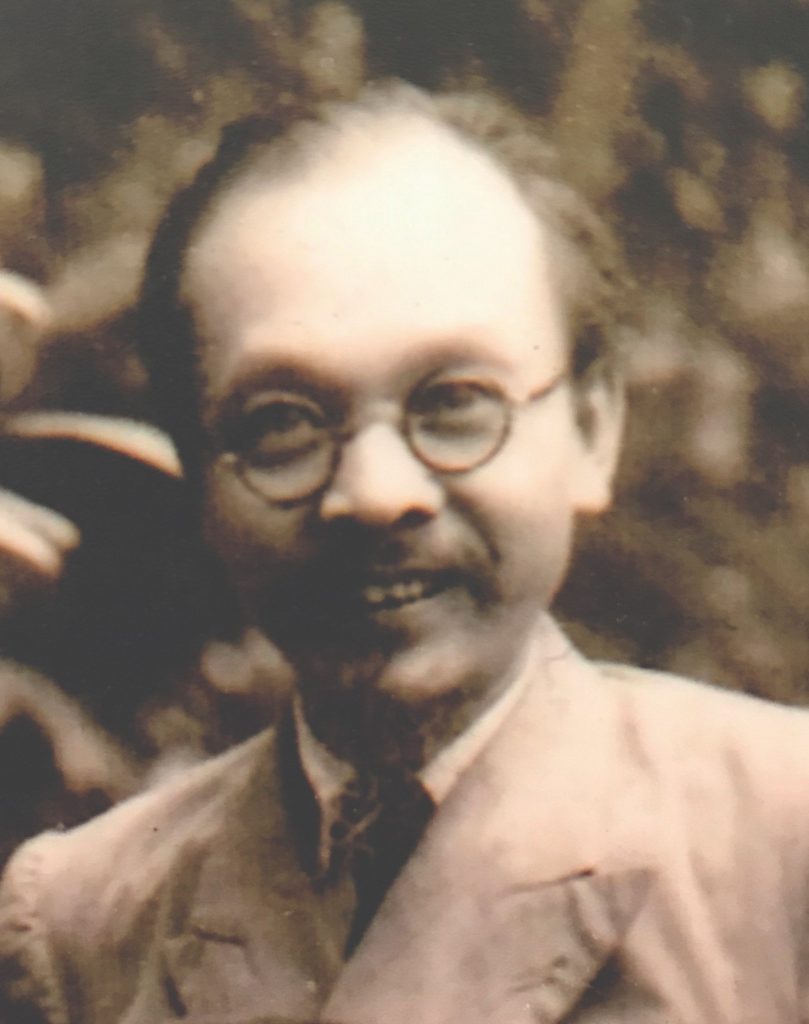
Portrait of painter Nam Sơn. Photo taken in 1949. Document of Ngô Kim Khôi.
“Recently, Nicolas Henni-Trịnh Đức was planning to submit a Master’s Thesis titled “Changes in Vietnamese portrait art, 1874-1976” [5], has made very interesting analyzes on the painting ‘Portrait of my mother’ by Nguyễn Nam Sơn that deserves our recognition:
[…] The portrait of Ms. Nguyễn Thị Lân is expressed solemnly and strongly. In the picture we see the prayer book being held by her with two hands, gently resting on her knees. The fingers show a magical, delicate way between the pages of the book. Along with the contemplative expression of her face, the book demonstrates the moment of meditation that Ms. Nguyễn Thị Lân is experiencing. This image seems to let us understand that while in the middle of reading, she closed the scriptures between her fingers, to think about some of the principles that she had just felt.
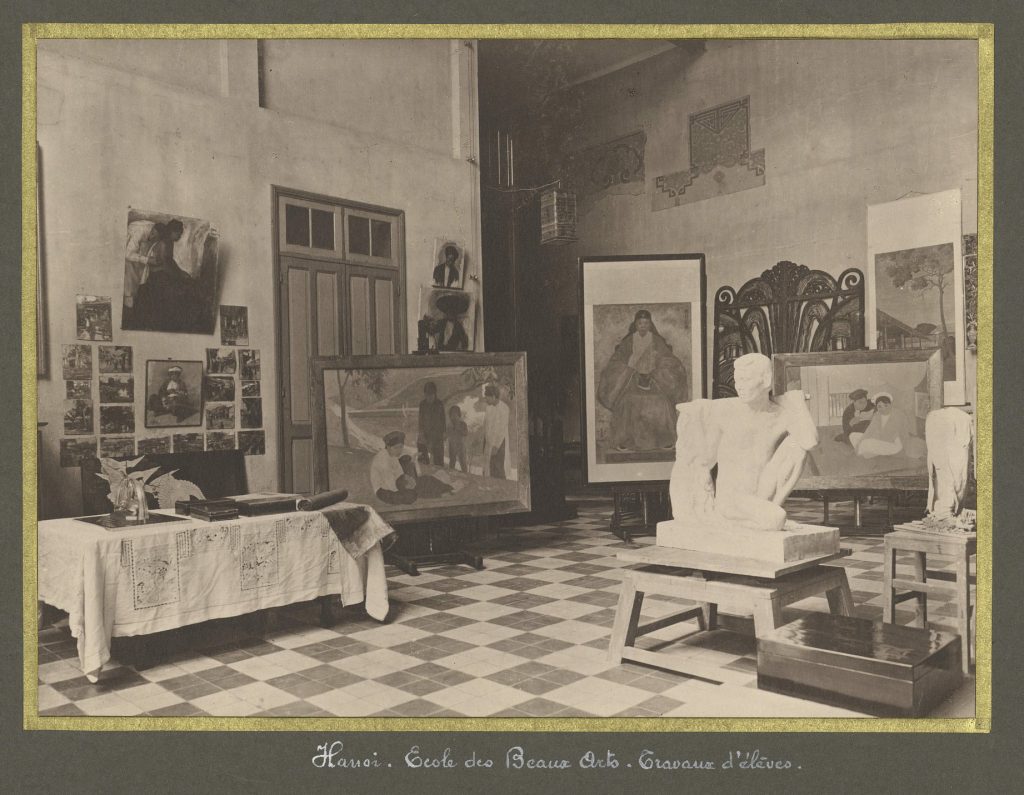
‘Portrait of my mother’ of Nam Sơn exhibited at Indochina Fine Arts College, 1930, before coming to Paris Colonial Exhibition 1931.
[…] Mrs. Nguyễn Thị Lân wears a robe with wide sleeves, a cross collar on her chest. The prayer book, the rosary, the headdress, and the robe harmonize with each other and form a coherent whole. Her portrait is a definitive statement, glorifying a devout and respectable woman. [6]
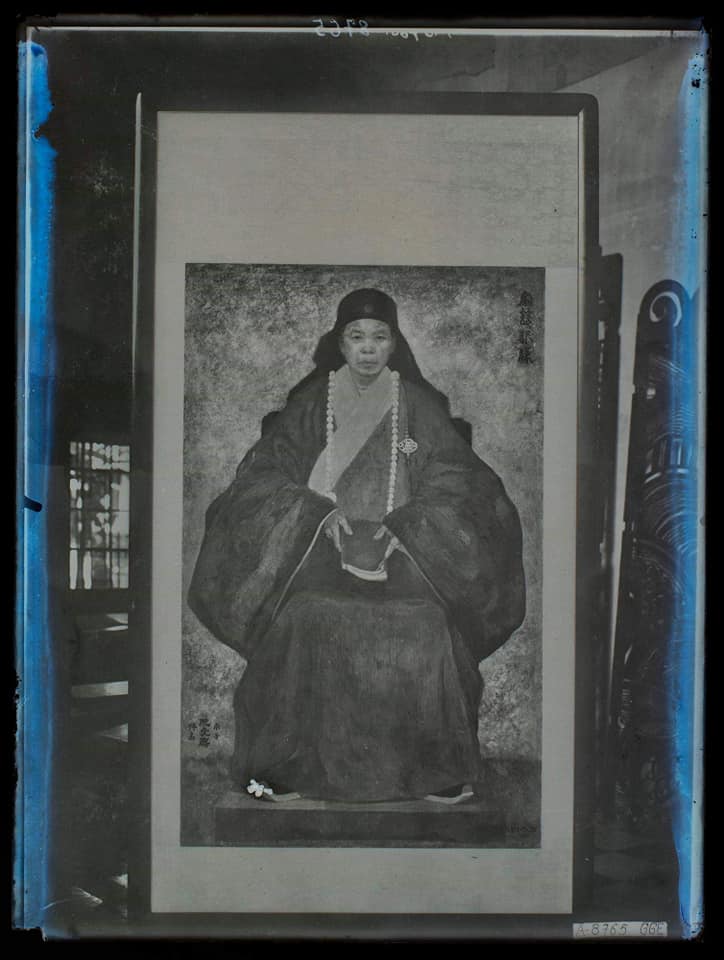
Photo of ‘Portrait of my mother’ in Hanoi, around 1930-1931. The photo was ordered by the French for document, now is in Center Aix en Provence, south France.
[…] However, strictly speaking this is not a portrait for worship, it was composed for a completely different purpose. Nam Sơn painted this portrait for display on the other side of the globe, in France, where the painting must demonstrate the talent and quality of the artist’s training. This is a work of art by Western definition. Nam Sơn did not make it for family worship, but for the promotion of art by the Hanoi School of Fine Arts. [7]
Ngô Kim Khôi wrote: “Co-founder of the Indochina Fine Arts School, however, Nam Sơn’s works are very rare, belonging to the compositions that are sought after among the connoisseurs and collectors alike. They all told each other, in order to have a perfect collection of Indochina paintings, at least one painting of Nam Sơn is required!
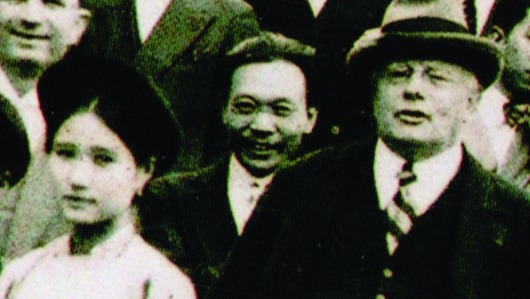
From the right: Victor Tardieu, Nam Sơn, Lê Thị Lựu. Photo taken at Indochina Fine Arts School, circa 1927, document of Ngô Kim-Khôi.
For the first time, an oil painting by artist Nam Sơn was put on auction. An excellent work, from the technical point of view as well as the historical aspect of Vietnamese painting, ‘Portrait of my mother’ deserves to be present in the largest collections or museums in the world.
Moreover, with a pioneering role, Vietnamese Fine Arts should grant this classic work with the title NATIONAL TREASURE.
- With the above quotations, the opinion of researcher Ngô Kim Khôi is remarkable. If it is true that ‘Portrait of my mother’ deserves the best position, it is still necessary to have Mạnh Thường Quân buy it at an auction and then donate it to the Vietnam Fine Arts Museum. This is difficult…
With a starting price of 200-300k EUR, if the bidding is exact the estimated price, or maybe even higher (many times it will be difficult), ‘Portrait of my mother’ will have many collectors who are completely capable. The problem here, this painting is rare, precious, big name, worthy, the best position is still at a National Museum under the government system. But perhaps, after this auction, the painting will have a place in a museum or some private collection. And the most that we want, the best, is that ‘Portrait of my mother’ will return to her homeland.
And if a private museum in another country can buy it and bring it back to display at their museum, then “we have no chance”- researcher Ngô Kim Khôi shared.
Written by Viet Art View
Copyrights belong to Viet Art View


